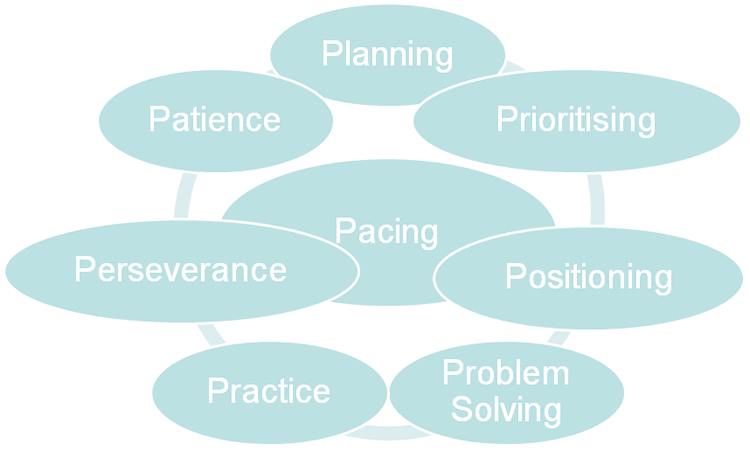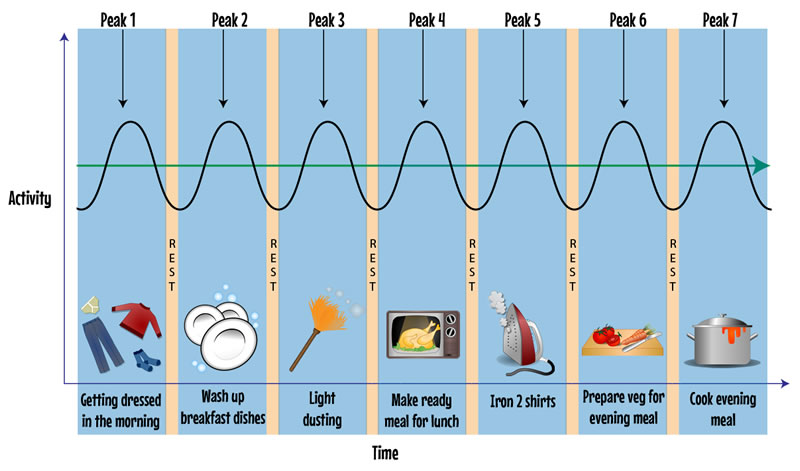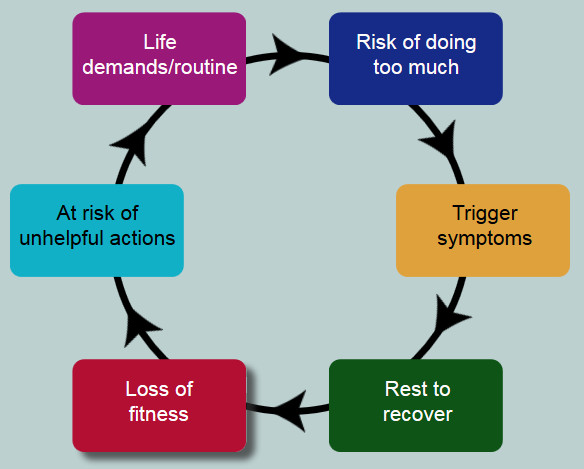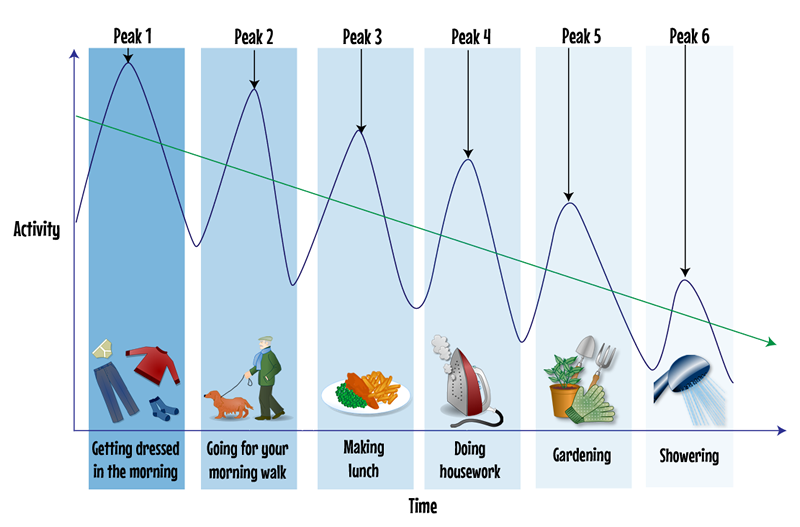
Use a diary to note when you feel most fatigue. Is there a pattern? Worse on certain days or times of the day?
Why not try a weekly or daily planner.
- Plan what really needs done this week and what jobs can be broken up into more do-able chunks.
- Plan what activities you will do for your health and your pleasure. For example, exercising, visiting friends, going to the cinema.
- Plan things you know help to recharge your body “battery”. For example, relaxation, reading, knitting, power nap.
- Commit to one job/ activity in the morning, one job/ activity in the afternoon and one job/ activity in the evening if you feel you still have enough energy.
- Commit to recharging your body “battery” at least once in the day.
- Commit to finding time throughout your week for things for your health and things you enjoy.
Remember
A battery that is completely flat is much more difficult to charge and becomes less efficient with time.
On occasions, you might decide it is worth running your battery flat because you want to do things that you wouldn’t miss for the world!!
For information on managing fatigue see:
Moving on Together (MoT): A self-management workbook by NHS Ayrshire & Arran.
For more practical tips see: Chest Heart & Stroke Scotland factsheet: Tiredness and Fatigue [.pdf].












